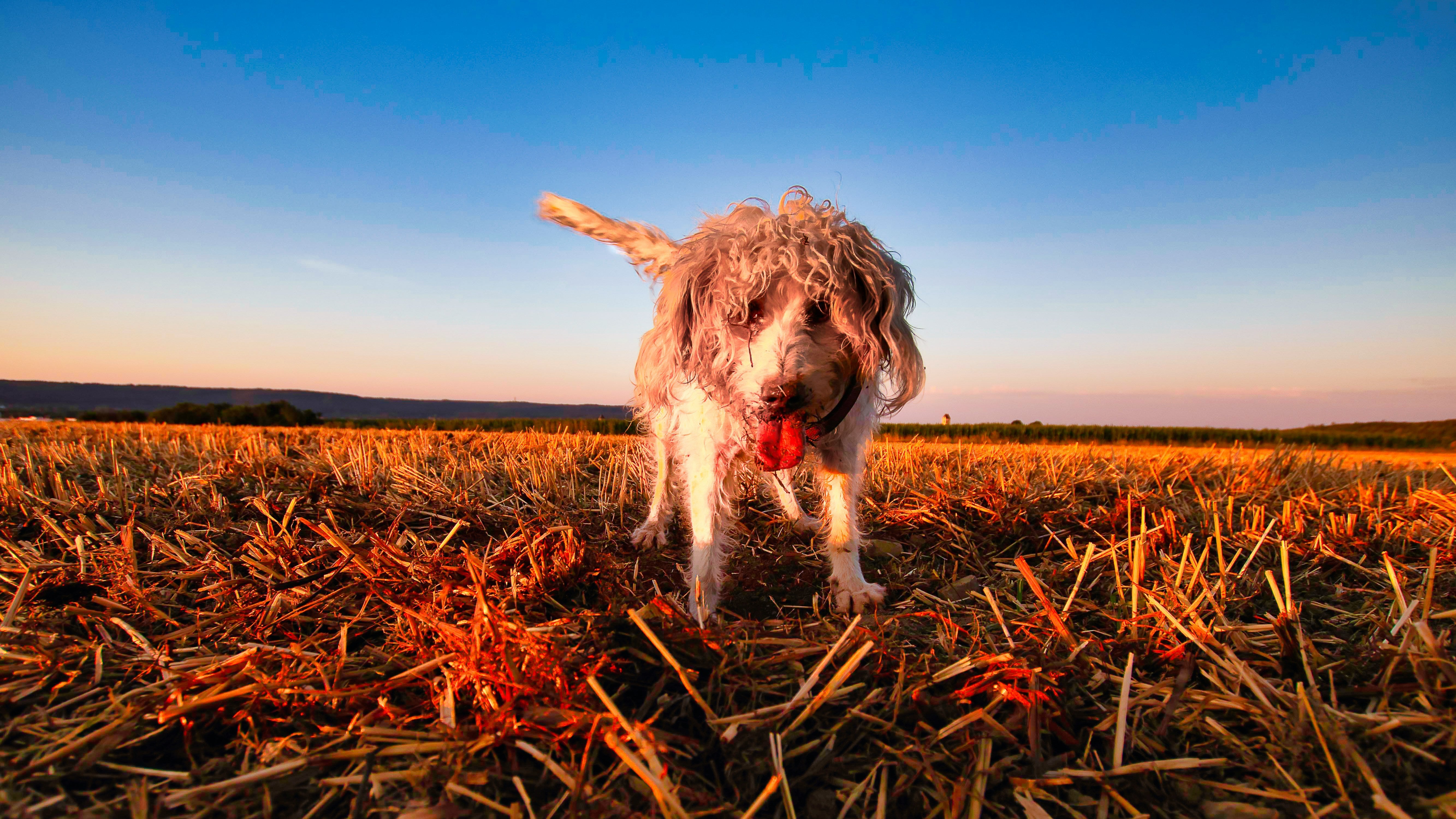
How to Create an Emergency Plan for You and Your Dog
Imagine you receive an alert on your phone warning you that a natural disaster is imminent, would you be prepared to evacuate your entire family, including your dog? With the frequency of weather-related natural disasters on the rise, emergency prep is now more important than ever for everyone, and dog owners have special concerns when planning for an emergency. In this article, we'll share what you need to know about emergency prep, from what types of natural disasters may impact your family to how to prepare for a natural disaster and be ready to respond with a dog emergency kit on hand.
Why You Need an Emergency Plan for You and Your Pet
Natural disasters pose threats to animals, as well as people. In some cases, pets become lost or separated from their human families. One survey found that one in five people who were forced to evacuate due to an emergency left a pet behind, and during Hurricane Katrina alone, around 100,000 pets were lost, with experts estimating that 70% of those animals died.
Even when dogs do get evacuated with their families, the upheaval in their lives can impact their health and well-being. Dogs may experience anxiety due to the change in their environment or lose access to nutritious food or necessary medications.
The good news is that having an emergency prep kit with supplies for your dog and an established emergency plan can greatly reduce the risk of getting separated from your pet and help to ensure that you have everything you need to care for them while you're evacuated.
Situations and Natural Disasters to Consider
For those wondering "just what is a natural disaster?", simply put, a natural disaster is a natural phenomenon that has a harmful impact on animals, people and property. Some examples of natural disasters include:
- Hurricanes and floods: Communities located along the coastlines of oceans, bays, rivers, lakes, ponds and streams can be impacted by these events, which may spark mandatory evacuations and create unsanitary conditions that are harmful for people and pets.
- Wildfires: Out-of-control fires can spread rapidly, leading to the need to evacuate with little warning. In addition to the flames, fires introduce dangerous particles in the air that can cause respiratory problems in pets and people.
- Earthquakes: Although they last for a short period, earthquakes can cause serious structural damage, and they may be accompanied by many aftershocks, which pose additional risks
- Tornadoes and severe storms: These dangerous storms marked by destructive winds can force people to take shelter in safe locations with very little warning.
Roughly 83% of pet owners in the U.S. live in an area at risk for at least one natural disaster. Learning about the threats in your area can help you create an emergency prep list geared toward the types of disasters that you may face.
The Pets Evacuation and Transportation Standards Act (PETS Act)
In response to the devastating effects that Hurricane Katrina had on pets, Congress passed the Pets Evacuation and Transportation Standards (PETS) Act, and President George W. Bush signed the bill into law on October 6, 2006. The law gives the Federal Emergency Management Administration (FEMA) a mandate to provide shelter, food and other necessary supplies for pets and service animals in the event of a natural disaster. It also requires state and local planners to provide accommodations at government-declared evacuation sites, usually ensuring that you can bring your pet with you during a mandatory evacuation.
How to Create an Emergency Plan
To ensure that you're ready in the event of a natural disaster, create a plan by following these steps.
1. Assemble an Emergency Kit for Your Dog
Having the right supplies already gathered will allow you to evacuate or shelter quickly in an emergency situation. Some things to include in your kit are:
- Enough emergency dog food and water for at least three days
- Medications and supplements for your dog
- Copies of your dog's prescriptions and vaccination records
- An up-to-date photo, your microchip information and ID tags
- Comfort items, such as favorite toys and Kradle calming products for helping your dog respond normally to stress
- Pet carrier or crate
- Contact information for your veterinarian and emergency animal hospitals and shelters in your evacuation location
- First aid kit with bandages, antiseptic and a dog first aid manual
- Leash, collar and harness
2. Plan Your Evacuation Route
Determine where your family will head in the event of a mandatory evacuation. Research shelters and hotels in the area that are pet-friendly, so you're not scrambling to look for dog-friendly accommodations in an emergency.
Once you've chosen a location, have a family meeting to discuss how you'll evacuate. Talk about where you'll keep the carrier and the rest of your emergency dog kit and who will take charge of getting your dog and grabbing the kit.
3. Practice the Plan
Once everyone is familiar with the plan, hold a few drills. Send text messages to your family to start the practice session. Then, have everyone gather the supplies and head to your at-home shelter or vehicle with your dog. Repeat drills periodically going forward, so everyone stays ready.
4. Create a Backup Plan
Talk to your neighbors about emergency preparedness. Offer to help evacuate their pets if a disaster occurs when they're not at home and ask for them to do the same for your pet. Determine how you'll get in touch in the event of an evacuation, arranging a meeting place, if possible, as phone and Internet service may be impacted during certain disasters.
Give Yourself Peace of Mind
While it's not possible to prevent natural disasters, you can lessen their effects on you, your family and your pet with an emergency preparedness plan. Once you have one in place and a dog emergency kit assembled, you'll feel better prepared and be ready to respond. Download the emergency kit checklist today and start working on your plan. Also, check out resources provided by your local emergency management agency for more tips on what to do in the event o








